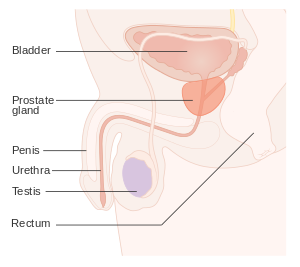The Art of Aging Well
We provide customized hourly and around-the-clock care to older adults so they can live happier, healthier lives at home.
Download by: Maria Licoudis, R.N. & Care Manager
by: Maria Licoudis, R.N. & Care Manager
 Most men are not aware of what the prostate is, or what it does, until they experience problems. The prostate is a small gland that is part of the reproduction system, it is the size of a walnut, and it sits under the bladder but in front of the rectum. As well, it envelops the urethra, which is the tube that passes out of the bladder. The prostate also makes semen. That is why when prostate enlargement occurs, it is more difficult and painful to urinate and ejaculate.
Most men are not aware of what the prostate is, or what it does, until they experience problems. The prostate is a small gland that is part of the reproduction system, it is the size of a walnut, and it sits under the bladder but in front of the rectum. As well, it envelops the urethra, which is the tube that passes out of the bladder. The prostate also makes semen. That is why when prostate enlargement occurs, it is more difficult and painful to urinate and ejaculate.
As men age, and especially after 45 years old, the prostate can enlarge. An enlarged prostate can also be called Benign Prostatic Hyperplasia, a condition that is common and benign, but in some cases, cancer can be present. If the prostate gets too enlarged, it can cause difficulty urinating or infection. Genetics and age are the predisposing factors. Symptoms include urinary frequency (often during the night), urgency, and incontinence, straining to urinate, and start and stop of urinary flow. Patients often also feel that the bladder is not completely empty. Some people also report minor stiffness in the back and hips, painful ejaculation and loss of libido. If left untreated, this can lead to bladder and kidney damage.
It is important to consult with a doctor for proper evaluation and diagnosis, and to rule out prostate cancer. Prostate cancer is the abnormal overgrowth of malignant cells in the gland. It can take years to become symptomatic. Treatment and prognosis are very good if caught early and if there are no metastases. This is why it is critical for men to have a yearly physical, including a rectal exam and a PSA blood test. A high level of PSA may indicate prostate cancer, or a suspicion that needs monitoring. If PSA is high, a prostate biopsy might be performed to see what the pathology shows.
Management and treatments for an enlarged prostate include:
Never neglect any of the symptoms of prostate enlargement! Check with your doctor right away. Prostate health is critical to a man’s physical and, especially, their mental well-being. Knowledge and action is the strongest weapon against prostate cancer. Don’t be embarrassed to speak to your loved ones and to your doctor.
Note: This article is for informative purposes only. Always check with a medical professional.

Get Started With a Free Consult